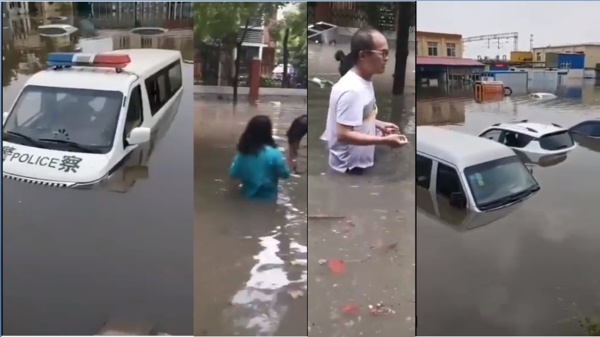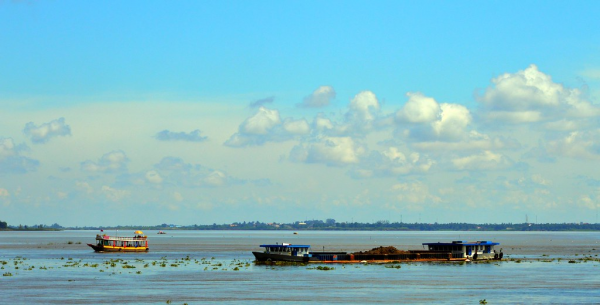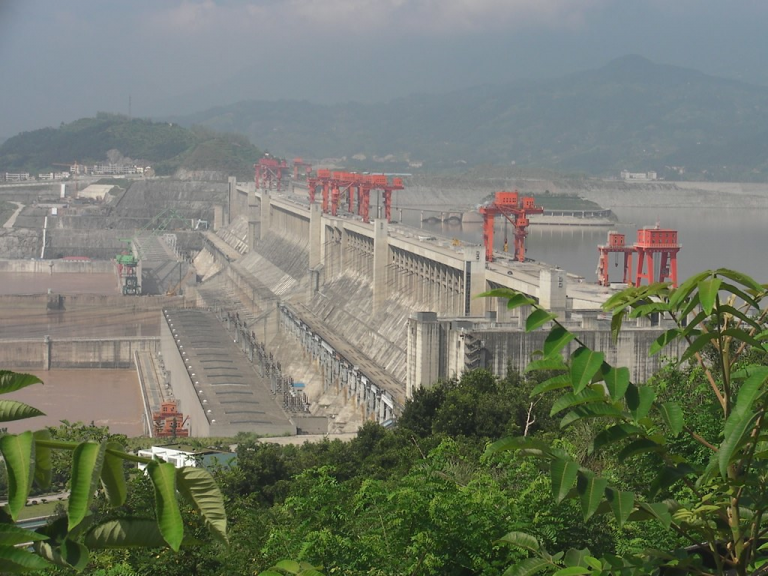Floods in China’s south have displaced more than 2.6 million people and wrought hundreds of millions in damages, state-run media report. The disaster follows weeks of heavy rain since late spring.
More than 1 million of those affected by the floods were in the province of Jiangxi, while Fujian, Guangdong, Guangxi, and Guizhou provinces also experienced destructive floods. Authorities evacuated more than 200,000 people from the affected areas.
Meanwhile, heavy rains and rising river waters have prompted authorities in central and northern China to issue flood warnings.
According to China Central Television (CCTV), 2.627 million people were displaced as of June 29. More than 1,300 homes were damaged or destroyed, and crops on 146,000 hectares of land (around 360,000 acres) suffered damage from the floods.
At least 14 people were killed or missing, according to Beijing News. One woman in Shenzhen, a city of more than 20 million people, was struck by lightning.
Success
You are now signed up for our newsletter
Success
Check your email to complete sign up
In Guizhou’s Qiannanzhou autonomous community, home to the Buyei and Hmong ethnicities, people were reportedly catching fish in the waterlogged streets.

China’s Ministry of Water Resources (MWR) forecasted major floods continuing from June through to August this year. Authorities in Anhui Province, central China, and the northeast’s Heilongjiang Province have issued flood warnings as rivers threaten to overflow their banks.
Ning Fanggui, an official with the Water Resource Committee of the Songhua and Liaohe rivers in Heilongjiang, told The Paper that water levels in the province are more than embankments can handle: “This year, flooding in northeastern China is heavier and a month earlier than normal due to frequent and heavy rainfall,” he said, as reported by state mouthpiece China Daily.
Jia Xiaolong, an official with the National Meteorological Center of China, reported the increase in excessive rain and resulting floods are due to climate change’s fueling extreme weather.
Last summer’s rainy season saw record-setting rainfalls that threatened the integrity of the Three Gorges Dam. The floods were the worst since the 1990s, affecting more than 60 million people, killing hundreds, and causing US$32 in damage. Many locals criticized the government’s slow or ineffectual response to the disaster, in which more than 400 rivers flooded.
Water insecurity
China is home to two major river systems, the Yangtze and Yellow rivers, whose waters are proving to be inadequate to support the people’s growing needs, including agriculture, energy, and manufacturing on top of individual use. Available water per capita in China is only one-fifth of the U.S. average, and is on the decline, having shrunk by 23 percent since the beginning of the 21st century. The main reason has been the increase in water usage by Chinese cities.
In a 2016 report titled “China, India, and war over water,” U.S. Army Colonel Jin H. Pak, assesses the risk of conflict over water resources in South Asia. In the report, Pak noted a World Bank Working Paper issued in 2006 stating that “China will soon become the most water-stressed country in East and Southeast Asia.”
The report also cited The Strategic Foresight Group’s research, that found projections of both India and China facing “a 30 to 50 percent decline in rice and wheat yields by 2050 due to ‘the cumulative effect[s] of water scarcity, glacial melting, disruptive precipitation patterns, flooding, desertification, pollution, and soil erosion.’”

Countries in South and Southeast Asia are also vulnerable to having their water cut off by China, which controls most of the Himalaya mountain range (Tibetan Plateau) and its massive glaciers. The glaciers supply the region’s rivers with fresh water that eventually flows to countries such as India, Cambodia, Laos, Thailand, and Vietnam.
China built dams along rivers flowing internally within the country, but has been steadily increasing the number of dams being built on rivers leading to the countries mentioned above which threatens their water security.
The Mekong River, which originates from the Tibetan Plateau and flows into the South China Sea, supplies the countries of Myanmar, Cambodia, Vietnam, Laos, and Thailand with its waters. The upper Mekong river, residing in Chinese territory, has 11 dams that affect the flow of water into the countries that depend on it as a resource for agriculture, food, and hydroelectric power. The amount of water reaching the lower Mekong has dwindled as a result of the dams holding back water in China. As measured in 2019, it was found the amount predicted to flow into the lower Mekong river in a season with above average accumulation from the wet season did not find its way to the countries in southeast asia. This resulted in drought as found by the water monitoring organization, Eyes on Earth.
The research team at Eyes on Earth used satellite data to predict the forecasted flow of water and compared it to actual data collected downstream in Thailand. Alan Basist, Meteorologist and President of Eyes on Earth has asserted China had held back water upstream on the Mekong river by withholding waters along its dams. The 2020 rainy season had similar results where China was faced with severe flooding but little water made its way down the Mekong to Southeast Asia.
China-India disputes
The construction of dams in China on rivers that flow into South Asia has sparked concern in India, due to the effects Chinese dams have had on the flow of water into the lower Mekong. The Brahmaputra River starts in Tibet and supplies India with 29 percent of their surface water. With India’s population expected to grow by 500 million by 2050 their needs for fresh water will rise with increasing demand.
With a potential dispute over securing water needs for a growing population, India has been involved in skirmishes with China over a disputed area in which the Brahmaputra flows along the China-India border. This area, known as Arunachal Pradesh has been disputed territory since China invaded Tibet in 1950. Both India and China have increased their military presence along their borders with a dispute breaking out into armed conflict in another hotly contested territory in the Galwan Valley in India’s Ladakh region.
With nearly one of every five people in the world living in China but only six percent of the earth’s freshwater available, the country faces severe water insecurity, which puts the future of its citizens and stable relations with its neighboring nations in doubt. China could use restricted water flow as a weapon by withholding water from neighboring nations through dams. The result would increase fresh water within its country and expand leverage over neighbors that it wishes to threaten in acts of retaliation if political disputes arise.
With reporting by Leo Timm.














